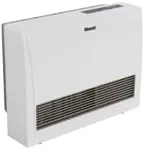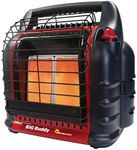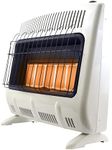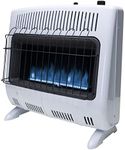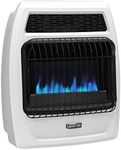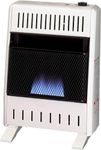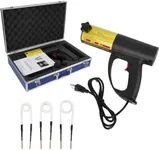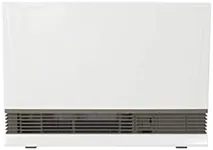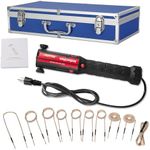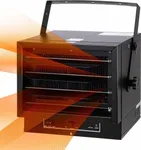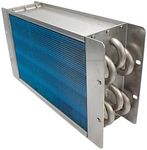Buying Guide for the Best Gas Heaters For Indoor Use
Choosing the right gas heater for indoor use involves understanding your specific needs and the key specifications that will ensure safety, efficiency, and comfort. Gas heaters can be a great way to keep your home warm, but it's important to select one that fits your space and usage requirements. Here are the key specifications to consider when picking a gas heater for indoor use.Heating Capacity (BTU)Heating capacity, measured in British Thermal Units (BTU), indicates how much heat the heater can produce. This is important because it determines how effectively the heater can warm up your space. For small rooms, a heater with a lower BTU rating (around 5,000-10,000 BTUs) is sufficient. Medium-sized rooms may require 10,000-20,000 BTUs, while large rooms or open spaces might need 20,000-30,000 BTUs or more. To pick the right one, consider the size of the room you want to heat and choose a heater with an appropriate BTU rating to ensure efficient heating.
Type of GasGas heaters can use different types of gas, such as natural gas or propane. This specification is important because it affects the installation and running costs. Natural gas heaters are typically connected to a gas line and are more cost-effective for long-term use, while propane heaters use refillable tanks and offer more flexibility in terms of placement. To choose the right type, consider the availability of natural gas in your area and whether you prefer the convenience of a fixed installation or the portability of a propane heater.
Safety FeaturesSafety features are crucial for indoor gas heaters to prevent accidents and ensure safe operation. Key safety features include oxygen depletion sensors (ODS), which shut off the heater if oxygen levels drop too low, and tip-over switches, which turn off the heater if it is knocked over. Other important features include overheat protection and child safety locks. When choosing a heater, prioritize models with comprehensive safety features to protect your home and family.
Ventilation RequirementsVentilation requirements refer to whether the heater needs to be vented to the outside to expel combustion gases. This is important for maintaining indoor air quality and safety. Vent-free heaters are easier to install and can be used in rooms without external walls, but they must be used in well-ventilated areas. Vented heaters require a flue or chimney but are safer for long-term use in enclosed spaces. To pick the right one, consider the room's ventilation and your willingness to install venting if necessary.
Thermostat ControlThermostat control allows you to set and maintain a desired temperature, which is important for comfort and energy efficiency. Basic models may have manual controls, while more advanced heaters offer digital thermostats with programmable settings. To choose the right one, think about how much control you want over the temperature and whether you prefer the convenience of programmable settings for maintaining consistent warmth.
Size and PortabilityThe size and portability of a gas heater affect where and how you can use it. Compact, portable heaters are easy to move from room to room and are ideal for temporary heating needs. Larger, fixed heaters are better for permanent installations in specific areas. To pick the right one, consider whether you need a heater that can be easily relocated or if you prefer a more permanent solution for a particular space.
